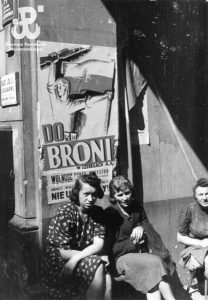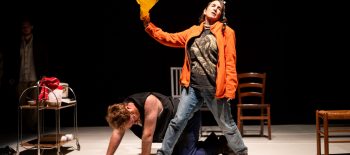The Warsaw Uprising broke out on Tuesday, August 1, 1944, at 17:00 PM.
Every year on that hour Warsaw honors the insurgents and traffic and pedestrians come to a stop to commemorate the victims of the Uprising.
The Warsaw Uprising turned out to be the most significant act of resistance in German-occupied Europe.
It was one of the most important and traumatic events in the history of the city.
Though planned to take a few days, it lasted more than two months.
The Uprising lasted 63 days and some 30,000 Home Army soldiers from the Warsaw district took part in the fighting.
Only 10% of them were armed. Most of the fighters were young people in the 11-18 age bracket.
Some 200,000 civilians died in the Uprising.
The Uprising came to an end on October 2, 1944.
The Warsaw Uprising Museum prepared a movie called “Warsaw Uprising” made entirely from documentary materials
of the original chronicles. It tells the story of the Warsaw Uprising as viewed through the eyes of a US airman who escaped
from a Nazi prisoner-of-war camp and two young reporters, cameramen for the Bureau of Information
and Propaganda of the Polish Home Army.
The Warsaw Uprising Museum also made the movie “City of Ruins”. The movie shows the sheer scale of destruction
wrought on Warsaw after the uprising.
Another interesting project commemorating the Warsaw Uprising is a movie created by Tomasz Dobosz –
“Postcard from the Uprising”. This is the first Polish feature movie produced in VR technology (Cinematic VR).
The film tells the story of a Warsaw insurgent Wladyslaw Sieroszewski who received a postcard from his daughter
in August 1944. This card affected his life in surprising ways.
The applied imaging technique gives the impression of two-sided reception of depth and distance.
As a result, the viewer, putting on special goggles, has the impression of being ‘inside’ the film world.
More about the project: http://www.konceptkultura.pl/pl/content/seans-%E2%80%9Ekartka-z-powstania%E2%80%9D
You can also watch a movie directed by Jan Komasa – Warsaw’44
For further reading about this project
Pictures: Muzeum Powstania Warszawskiego – Warsaw Uprising Museum collection




